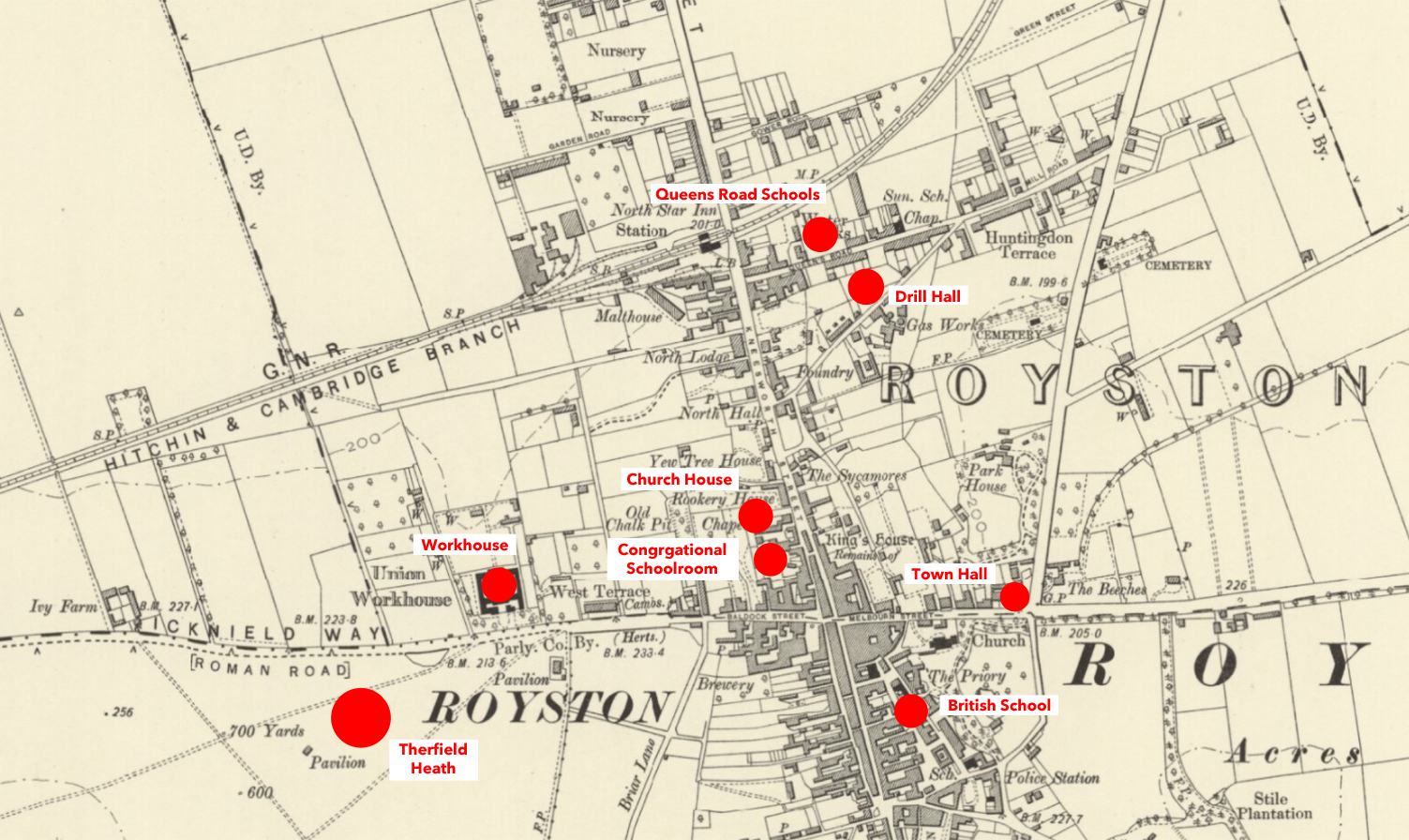World War I - Royston’s use by the military

Like many small towns throughout the country, especially those with good communication links to the south, Royston was used by the British military to muster troops and for training purposes during the Great War.
Different buildings were commandeered to house troops or to act as activity centres, such as mess halls and meeting rooms. Some were to play a prolonged part in supporting troops throughout the war.
Queens Road Schools
An auxiliary hospital linked to Cambridge Eastern 1 run by Herts Volunteer Aid Detachment (VAD) 18.
Now demolished and the site of housing in Clark Road.
Drill Hall, Mill Road
Used for stores and enlistments until December 1915. Now the British Legion Club.
Church House, Kneesworth Street
Used as Battalion head quarters. Now used as a nursery.
Congregational Schoolroom, Kneesworth Street
A soldiers’ welcome run by the Volunteer Aid Detachment and later the Infant’s school.
Now the home of Royston Museum.
Union Workhouse, Baldock Street
Baths used by soldiers each morning in batches.
Now demolished and the site of Downlands.
British School, Market Hill
February 1915 : Royal Welsh Fusiliers used the school as a mess hall and cooked in the yard.
Used by the children from Queens Road school while that was in use as the auxiliary hospital.
John Street Sunday School was taken over for storage and the upper room was taken over as a mess.
Town Hall, Melbourn Street
Used by the children from Queens Road school.
February 1915 : Requisitioned as a mess room with cooking being carried out in the garden on the west side of the hall.
Used for patriotic concerts, e.g. February 1915 - A grand entertainment by the Welsh Fusiliers with proceeds to the Knitting Club and the YMCA coal fund.
The gardens were used for growing vegetables.
Therfield Heath
September 1914
1,000 men of the Royal Field Artillery encamped here.
February 1915
1,100 men from the 5th Battalion, Royal Welsh Fusiliers (territorials) encamped here.
March 1915
The Royal Welsh Fusiliers left and were replaced by 1,100 men from the 4th Battalion, Cheshires encamped here.
In addition, approximately 3,000 men from other Welsh Regiments were encamped on the heath in 1915.
The local paper, “The Crow”, reported that all the men are in private houses with public buildings only being used as mess halls and stores, etc.
Men were marched twice a day for exercises at 9.00 a.m. and after diner.
Cricket and football matches took place with the regular and wounded soldiers.
Hay was grown on the heath and is mentioned in “The Crow” in August 1916.